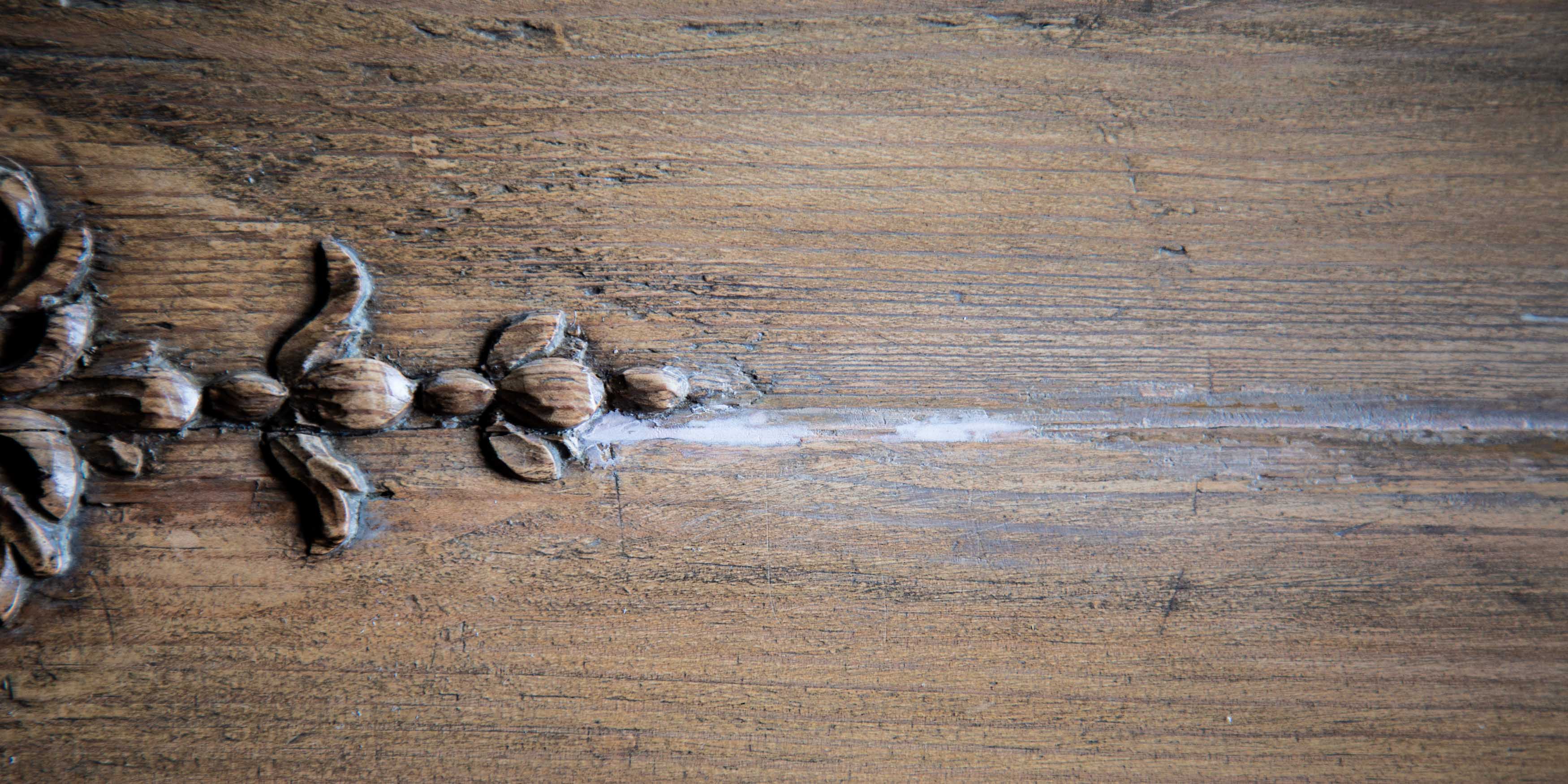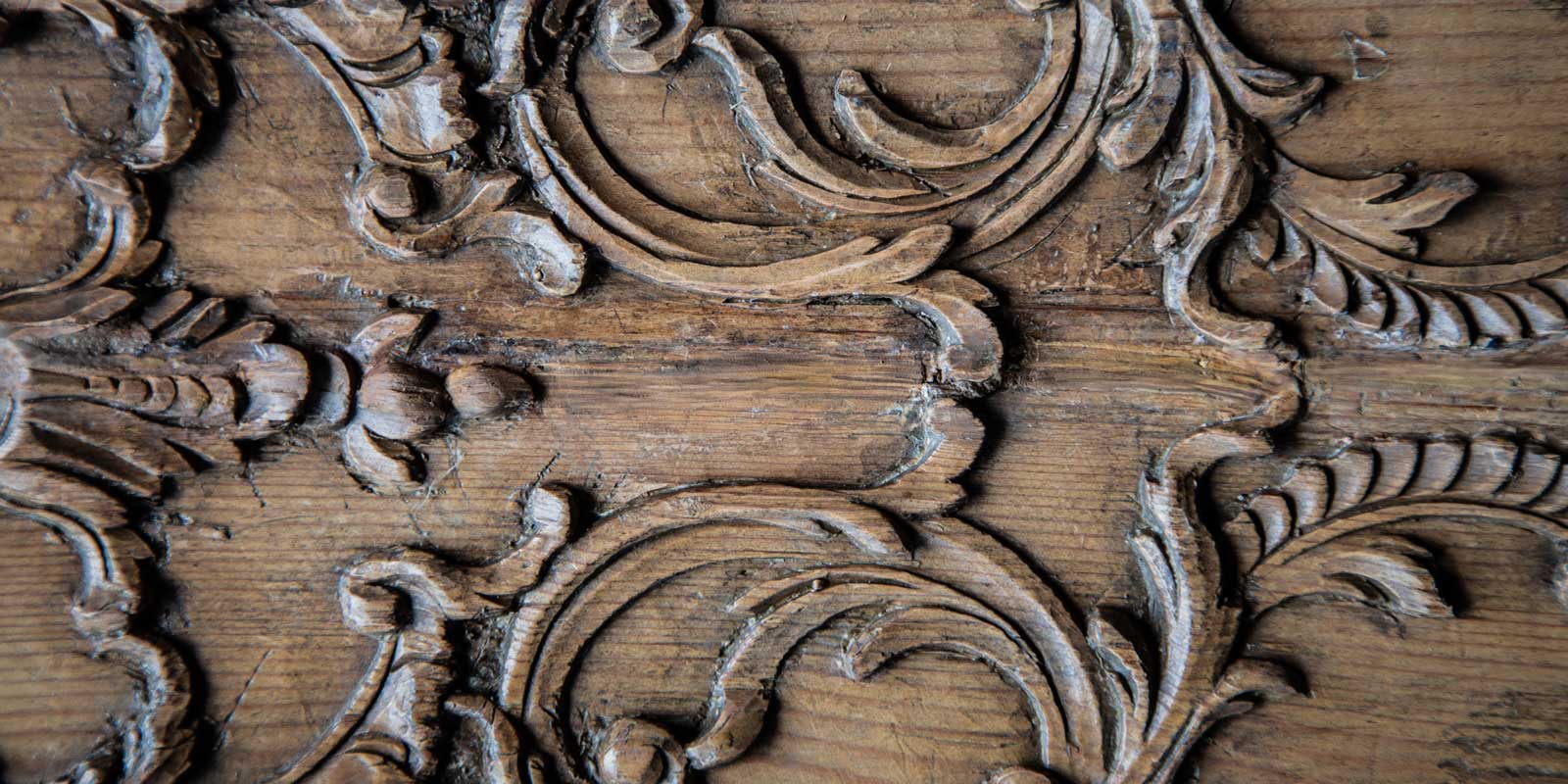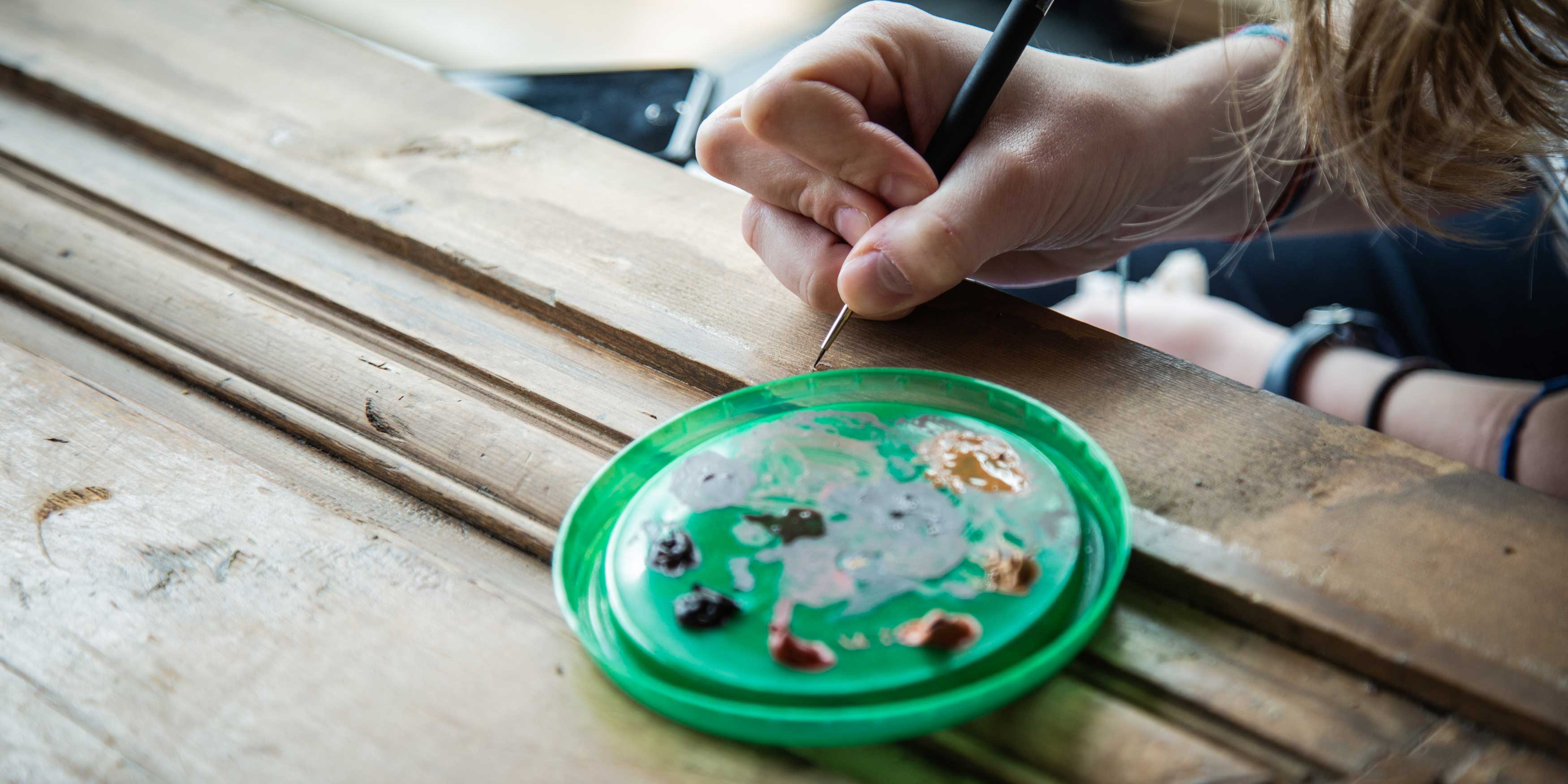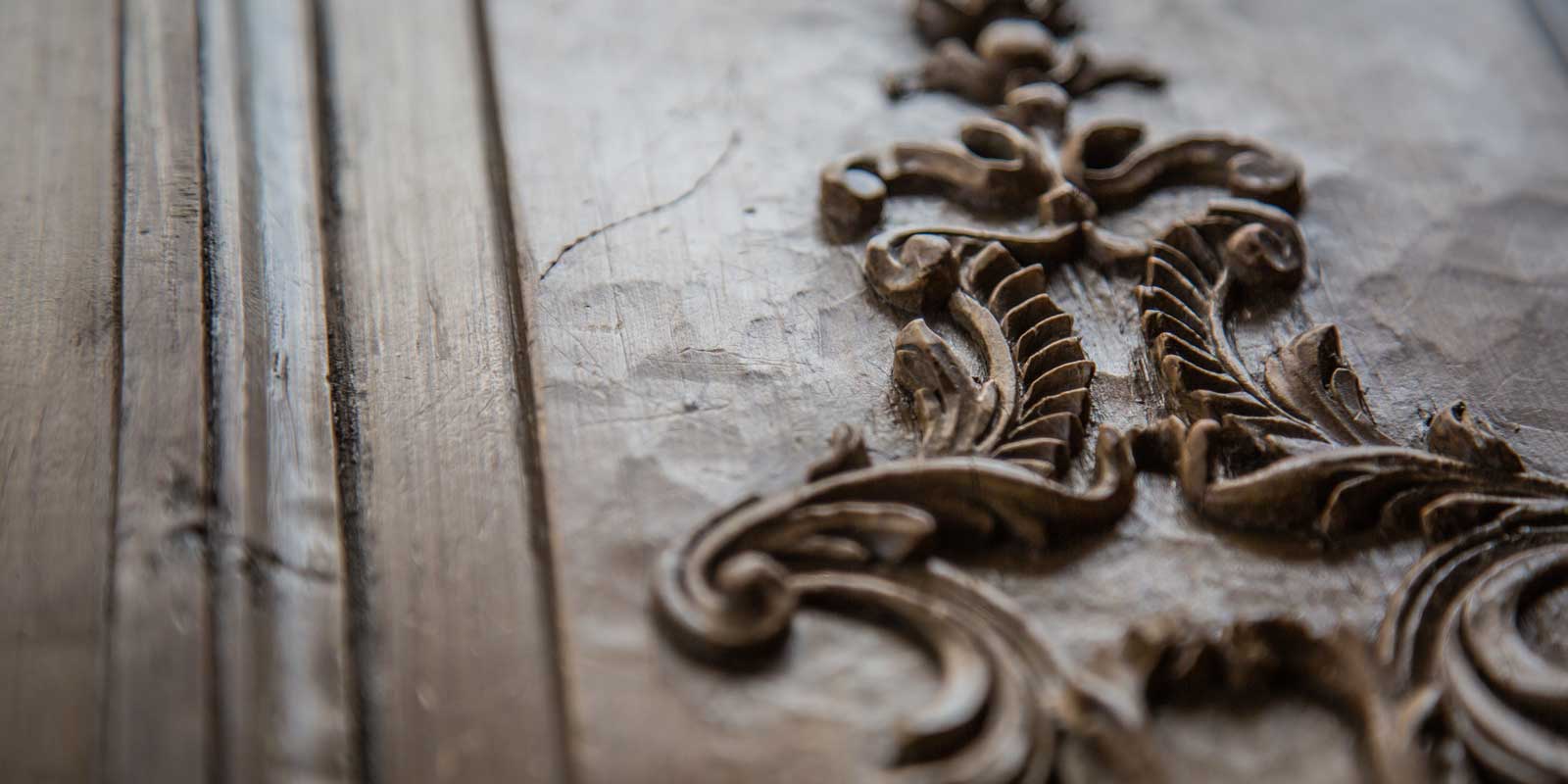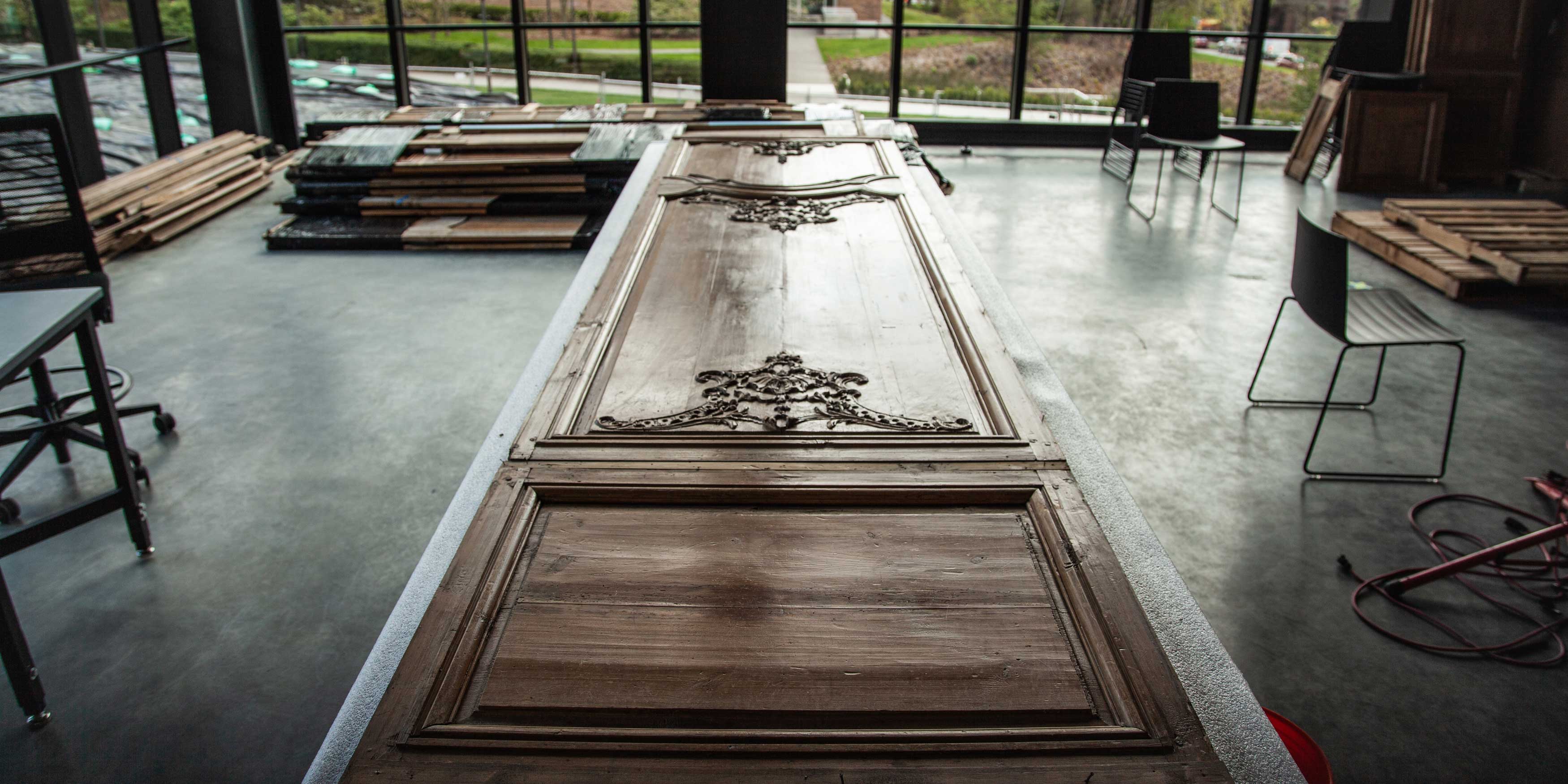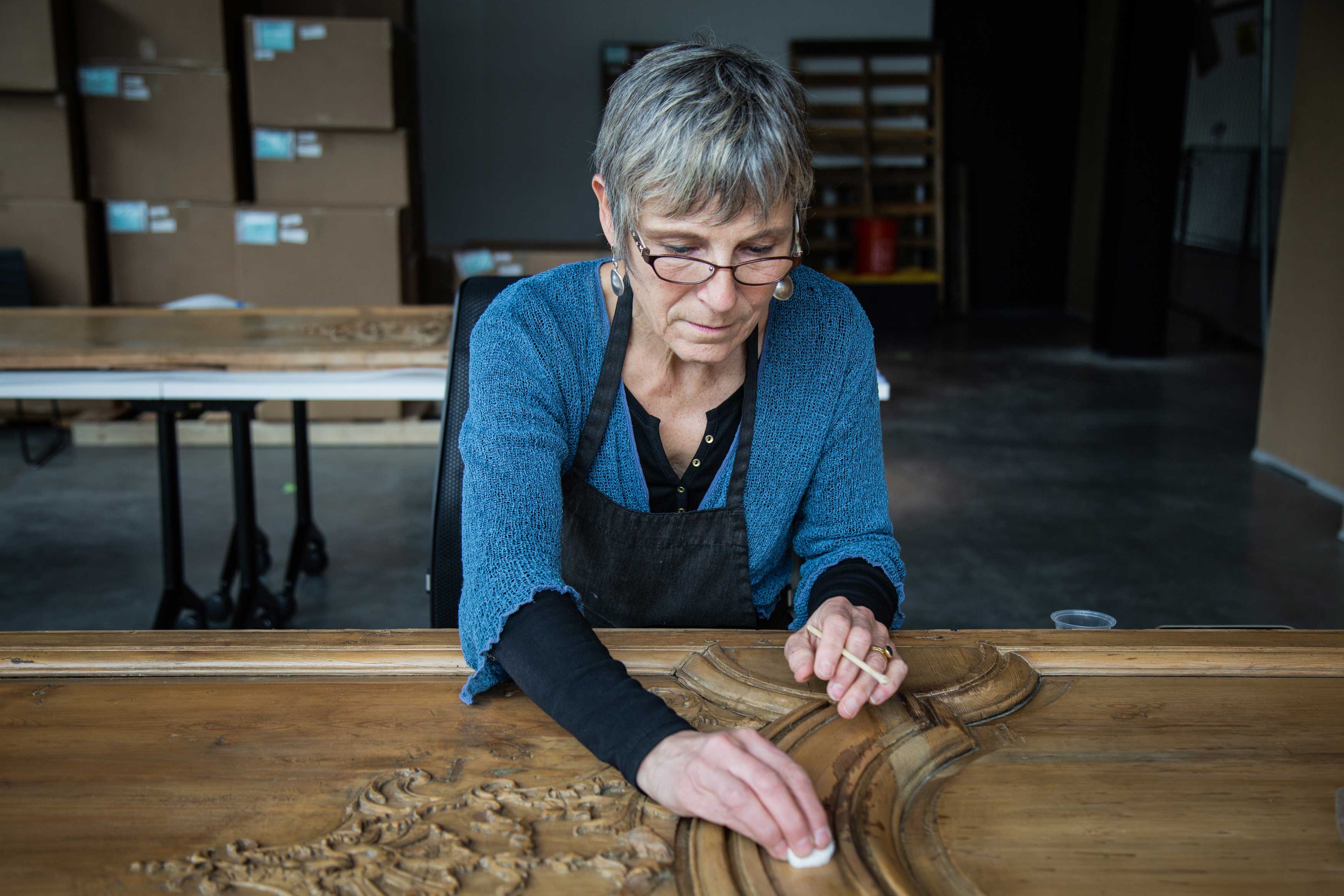
Conservator Corine Landrieu removing a stain on the boiserie panels formerly installed in the Burke Café.
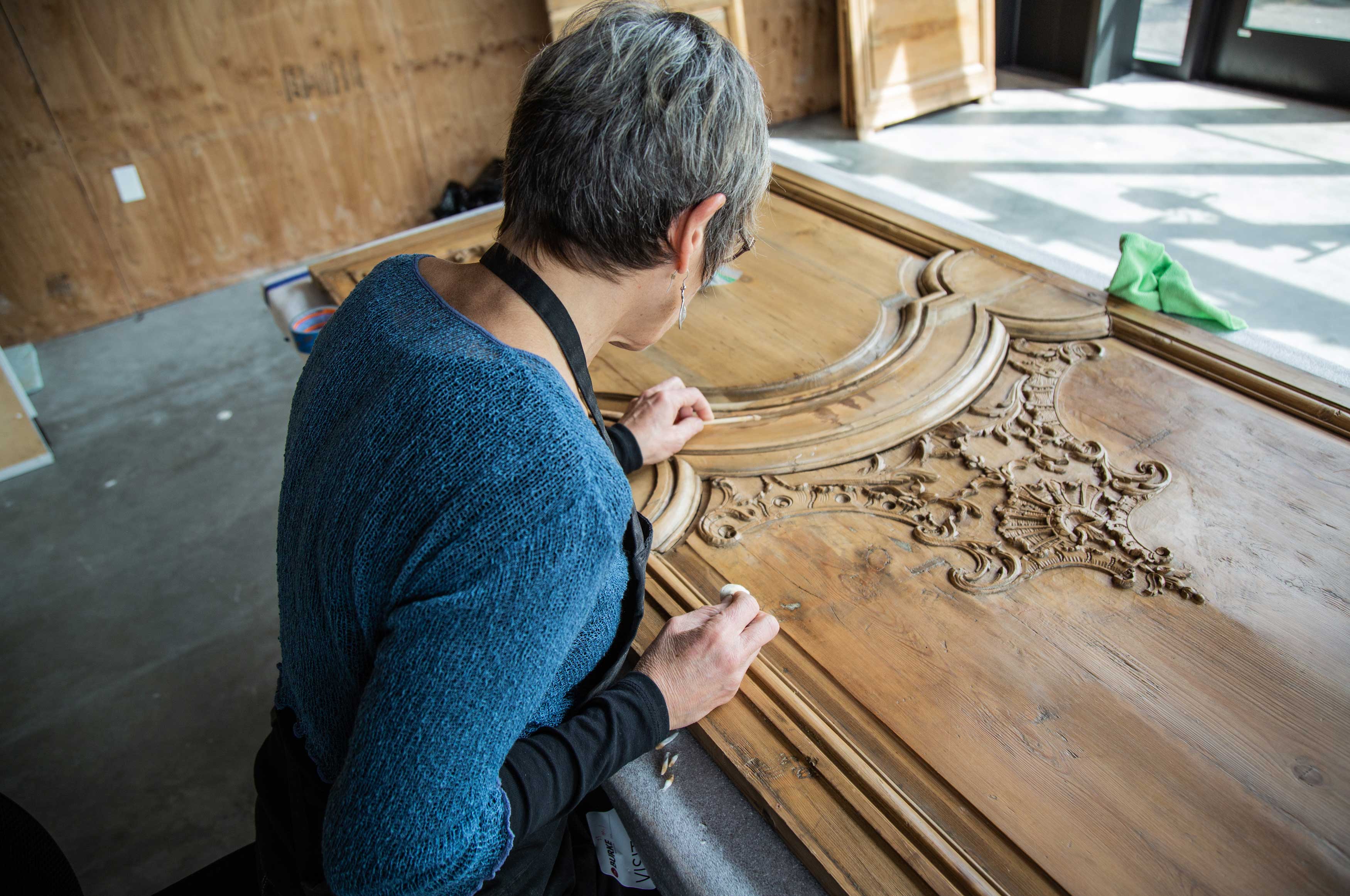
Corine and her team will be working into the summer to clean and repair all 21 panels to be displayed in the new Burke Museum when it opens in October 2019.
Cleaning with Artificial Saliva
Originally created around 1720 in France, the waxed pine paneling — or boiseries — lined the music room of the home of D.E. Frederick (owners of the Frederick & Nelson department store in downtown Seattle) in the Highlands neighborhood of Seattle. The set was donated to the University of Washington in 1968 and installed in the Burke Museum café in 1975 as part of its permanent collection.
Until now, the boiserie set has not been conserved. In fact, recent rules prevented the wood from being altered in any way. That means no tape, no nails, just decades of pen marks, accidental coffee spills, and water stains from dirty Seattle rainboots scuffing the portion of the panels closest to the floor.
“Some of them come in and they're really filthy,” said Corine. “So the first thing we do is vacuum the panels thoroughly. And then after that we clean the entire panel with artificial saliva.”
Artificial saliva?
“It’s a chemical gel that mimics the enzymes in saliva,” she said. Similar to how saliva cleans your mouth without damaging your teeth, artificial saliva is used to break down the grime on the panels without damaging the wood.
“We go over the entire panels with cotton balls and saliva one small section at a time,” Corine explained. “We clean a section then rinse with cotton swabs and distilled water to remove any residue from the saliva or grime. Then we dry it and move on to the next patch.”
This is not a quick and easy process.
“In the beginning it took five of us three full days to do the cleaning plus the repairs to one panel, but now we are going faster,” she said.
With nine panels complete, Corine and her team will be working into the summer to clean and repair all 21 panels to be displayed in the new Burke Museum when it opens in October. The panels will be installed in the Cascade Room, a free, public area adjacent to the museum lobby, where visitors can reflect, relax and discover the history of Washington’s oldest public museum.
Speaking through craftsmanship
As a professional object and sculpture conservator, no two projects Corine works on are the same.
“You can see the toolmarks [of the original sculptor] and I really love that,” she said. “If you move your head in the right way you can see the [raised areas] are carved in the body of the wood that the panels are made of, they are not glued on. It’s remarkable how they did this.”
“When I see these toolmarks, I appreciate the talent that went into this,” she said. “It is kind of like the wood is talking, in a way. It’s still so present. You can see the relationship between the wood and the person who carved this.”
By the time Corine and her team are finished, their own voices will be added to the paneling, ensuring that the wood remains speaking to those who view it for generations to come.
